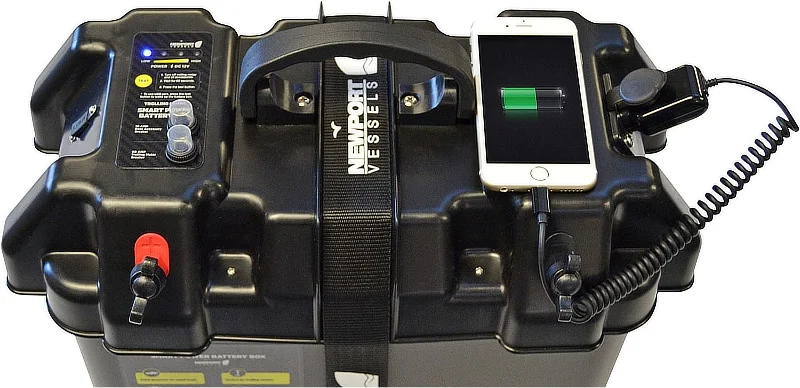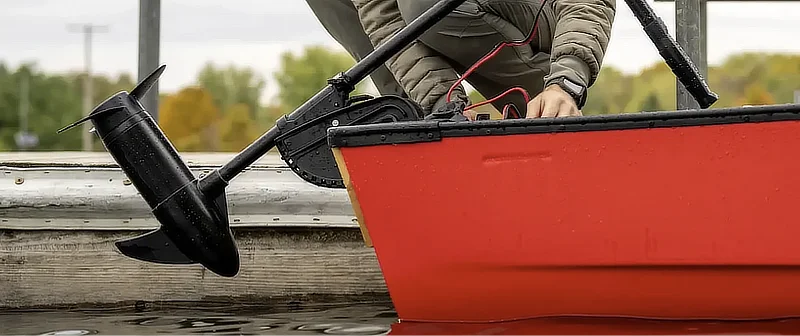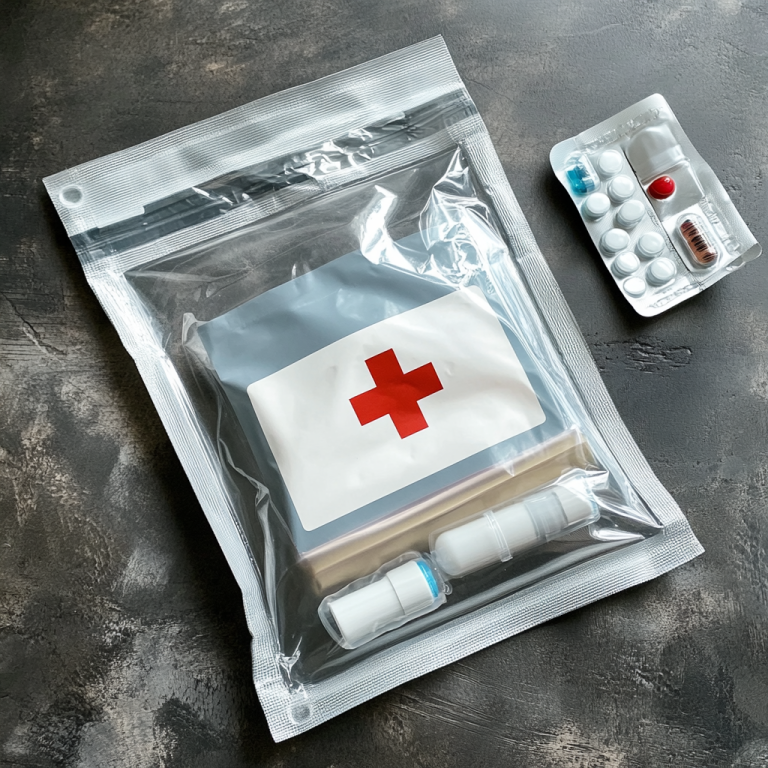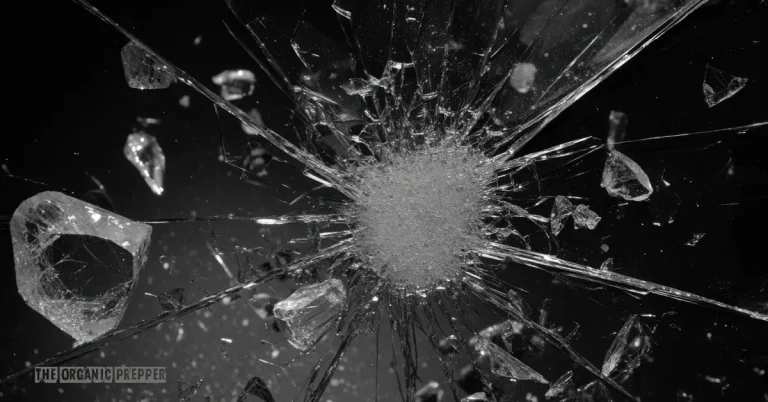This battery and its chemistry technology are perfect if you’re looking for one of the best lightweight 12V batteries for applications such as a trolling motor battery. It is superior to the traditional 12V lead acid battery in many ways. Let me tell you about it!
The battery chemistry is called LiFePO4. Lithium Iron Phosphate. It’s one of several types of lithium battery. This one is the safest and cleanest.
Lightweight 12V Battery – LiFePO4 – Feature Advantages
The reasons why I really like this battery and why it’s one of the best choices for use with a trolling motor…
Lightweight
It’s very lightweight! Typically 2/3 less weight than the lead-acid 12V battery equivalent. This one is only 24 pounds while holding an energy capacity of 100 Amp hours. The LiFePO4 battery chemistry packs a lot of power density compared to an equivalent deep-cycle lead acid battery.
As of this post, I’m approaching my mid-sixties. I can still lug around a 70-pound 12V battery. But my oh my… 24 pounds is sure a lot less! Just saying… A lightweight 12V battery has its advantages!
I have several 31-AGM (Trojan) deep-cycle lead-acid batteries around here and they each weigh 69 pounds. That’s a BIG difference compared to a lithium iron phosphate battery that weighs only 24 pounds, especially when hauling that battery around and into your boat for powering the electric trolling motor (and wherever else it needs to go).
Among the many choices, this one, in particular, is apparently and currently, the best value, while also being the best well-reviewed choice in its category – I calculated the various costs per Amp-hour (Ah).
12V, 100Ah, 24lbs
(amzn)
20A Charger for LiFePO4 12V-100Ah Batteries*
(amzn)
*Make sure that whatever battery charger you choose (e.g. for this type of trolling motor battery) is compatible with a LiFePO4 battery.
Cycle Life of LiFePO4 battery is SO MUCH BETTER
There’s another huge reason why I like this battery (the LiFePO4 battery chemistry). Actually, there are two reasons combined into one. The relationship between the 12V battery lifetime number of cycles (cycle life) and the depth-of-discharge (the capacity that you can drain the battery during use).
Folks, this is a big deal. First of all, if you drain a lead acid battery down to zero, you will absolutely damage it to an extent, perhaps even killing it. Chances are you’ve done that before (I know that I have – oops).
In fact, regarding lead acid battery chemistry, it is highly recommended that you never discharge below 50% to optimize cycle life (see below). In other words, you might say that a typical lead acid battery (e.g. deep-cycle) has a useful capacity of 50% (or less), or just 50Ah from a typical full-size 12V deep cycle battery.
However, this is one area where LiFePO4 is so much better. Today lithium iron phosphate batteries will safely utilize all of their capacity if needed. Although not recommended practice for any battery, you can drain the LiFePO4 all the way down to zero (like the one that I’m highlighting in this article) and you won’t damage it. That said, my own personal limit would be 80% DOD.
Here’s the other related reason why this battery is best in comparison. It has to do with depth of discharge versus cycle life.
The deeper that you discharge, the fewer lifetime cycles. This is also true with the LiFePO4 chemistry but with one huge difference. That is with the number of lifetime cycles (which is WAY more with lithium iron phosphate battery chemistry).
12V Battery Cycle Life Comparison of LiFePO4 vs Lead Acid
Here’s a chart that compares a 12V lead acid AGM-type battery with the LiFePO4 lithium iron phosphate 12V battery linked above. It illustrates the difference between cycle life versus depth of discharge between the two battery chemistries.
| 12V Battery Type | Cycle Life (100% DOD) | 80% DOD | 60% DOD |
| Lead Acid 31-AGM* | ~300 with damage | 550 | 800 |
| LiFePO4* | 4,000 | 6,000 | 15,000 |
*Lead Acid 31-AGM data sourced from Trojan datasheet
*LiFePO4 sourced from LiTime battery datasheet
Note: The lead acid deep-cycle battery chemistry cycle life is MUCH better when discharge isn’t so deep. For example:
- 1,000 cycles @ 50% DOD
- 1,800 cycles @ 30% DOD
- 2,700 cycles @ 20% DOD
But with that said, the LiFePo4 lithium iron phosphate cycle life blows it out of the water, so to speak.
12V Battery For Electric Trolling Motor
So let’s get back to using this lightweight battery with a trolling motor, and the ability to safely discharge the LiFePO4 way further without issue compared to the lead acid 12V deep cycle. I’m going to use the Newport NV electric trolling motors as an example.
Here’s a chart of how many approximate hours the 12V battery will last if using the following trolling motors (various thrust and amps).
Trolling Motor Battery Life Hours
This is intended as a general guide rather than absolute results. According to Newport trolling motor published specifications of maximum thrust and full-power amps, I extrapolated what may represent a 5-speed forward thrust control versus the number of trolling hours from the battery.
Note that I could not find their percentage of max amps versus speed setting, so I simply performed a linear example for perspective (Hey NEWPORT trolling motors, if you ever see this post, let me know those exact specs and I’ll upate this)…
| Newport Model (Thrust) | 100% Pwr (Hours) | 70% pwr | 50% pwr | 30% pwr | 10% pwr |
| NV-36 (29 Max Amps) | 3.4 | 4.9 | 6.9 | 11.5 | 34 |
| NV-46 (40 Max Amps) | 2.5 | 3.6 | 5.0 | 8.3 | 25 |
| NV-55 (52 Max Amps) | 1.9 | 2.7 | 3.8 | 6.4 | 19 |
| NV-62 (58 Max Amps) | 1.7 | 2.5 | 3.4 | 5.7 | 17 |
Remember, the LiFePO4 lightweight battery (amzn) can be deeply drained without issue, whereas the typical lead-acid deep-cell battery will likely become damaged when drained all the way down.
Obivously while out fishing on a boat with a electric trolling motor, it’s not ON all of the time. Rather, typically, some fraction thereof. Additionally, your choice of speed will affect battery life. So, your ‘mileage may vary’.
BONUS: Trolling Motor Smart Battery Box

Concluding, I really like the lithium iron phosphate (LiFePO4) battery chemistry for being so much more lightweight, and its vastly better cycle life performance than a typical 12V lead acid deep cycle battery that you may use for a trolling motor or other applications.
[ Read: Battery State-Of-Charge Chart | 12 Volt Battery ]
[ Read: Power Inverter 12V DC To 110V AC For Your Car Battery ]


















